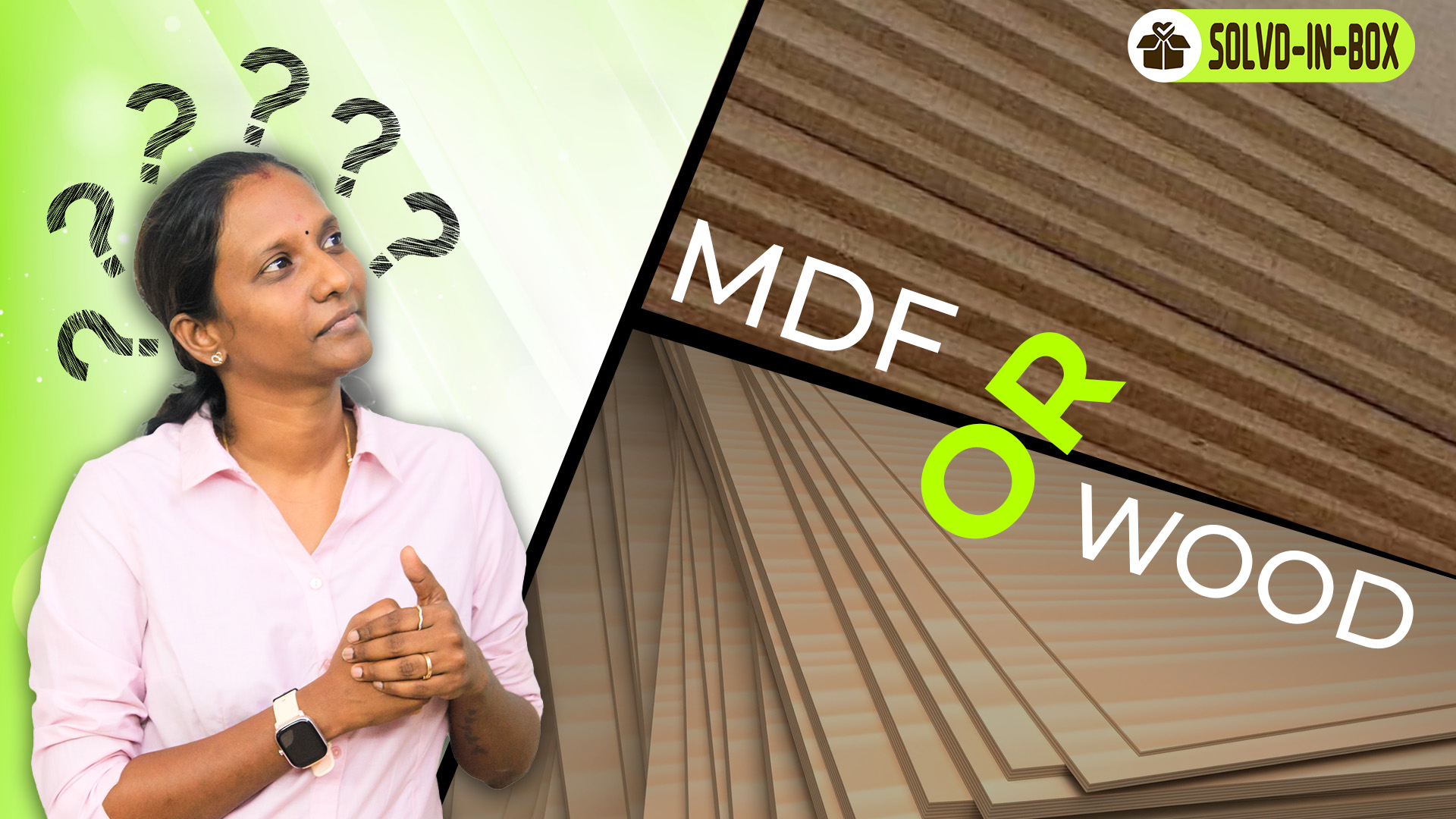Introduction:
Choosing the right material for your furniture or cabinetry is a crucial decision. MDF (Medium Density Fiberboard) and solid wood are two popular options, each with its own set of pros and cons. In this blog post, we’ll explore the differences between MDF and wood to help you make an informed decision for your next project.
Definitions
MDF Baseboards:

MDF baseboards are made from a mixture of sawdust, wood chips, and binders. Think of it like a dry bowl of oatmeal. Compared to pine baseboards, MDF ones are not as good because MDF can break easily, is heavy, and can get damaged by moisture.
Pine Baseboards (Solid, Continuous Wood):

Solid continuous pine is what you imagine as “real wood.” It’s one long piece of wood with no breaks or glue.
Pine Baseboards (Finger-Jointed):

Finger-jointed pine is made by joining smaller lengths of pine in the factory. You can tell it’s finger-jointed when you see a piece of wood with a break in the grain where one part ends and another begins.
MDF (Medium Density Fiberboard):
Pros:
- Affordable: MDF is usually cheaper than solid wood.
- Smooth Surface: MDF is smooth and even, making it easy to paint and finish.
Cons:
- Easily Scratched: MDF can get scratches easily, and you can’t really fix them by sanding like you can with solid wood.
- Heavy: MDF is much heavier than solid wood, making it harder to install and handle.
- Doesn’t Like Heat: MDF doesn’t handle really hot temperatures well; it can get damaged and can’t be fixed.
Solid Wood:
Pros:
- Tough: Solid wood is strong and can handle scratches and dents better than MDF.
- Natural Beauty: Solid wood shows off its natural patterns and looks nice.
- Can Be Fixed: Scratches on solid wood can often be fixed by sanding, making it look good again.
Cons:
- Cost: Solid wood is usually more expensive than MDF.
- Weight: Solid wood is heavy too, although not as heavy as MDF, which can make it a bit tricky to handle.
- Doesn’t Like Moisture: Solid wood can warp or crack if it gets wet for a long time.
Think about what you like, how much money you have, and where you’re putting the material when picking between MDF and solid wood for furniture or cabinets
Deciding Between MDF and Solid Wood: What’s Best for You?
As you’ve learned, neither MDF nor solid wood is the clear winner in this competition. Ultimately, your choice depends on what you like, how much money you have, and how you plan to use each material.
When it comes to cabinet doors, though, medium-density fiber wood stands out. It’s a good option if you want to freshen up your kitchen or bathroom without spending too much money. It’s also great if you value convenience and practicality more than looks.
On the other hand, if you’re someone who loves classic styles, doesn’t mind spending a bit more, and has a dream project in mind, then solid wood is the material for you. At JustWoodFurniture.net, we can create any piece of furniture you envision







